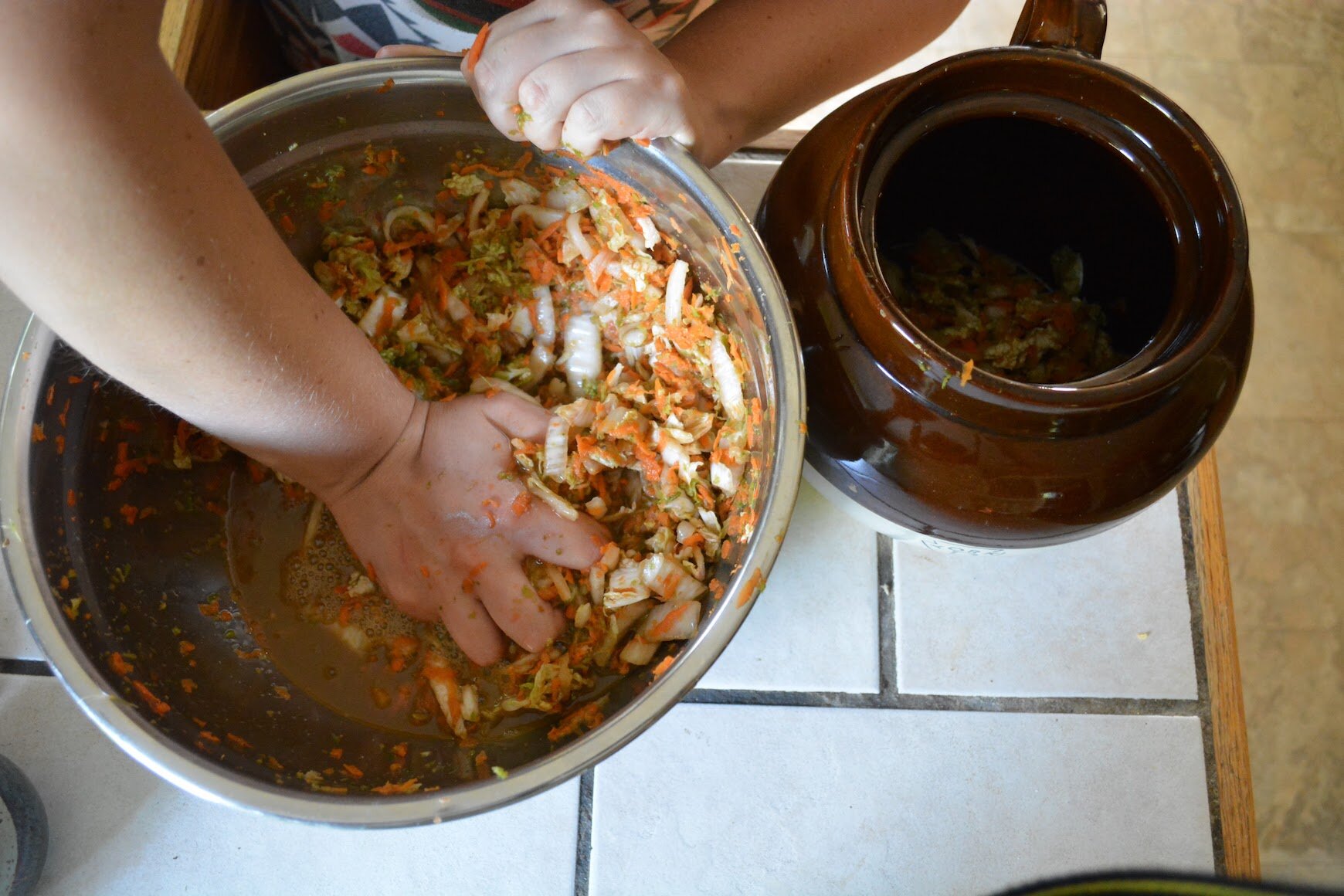Making Kimchi
Traditionally, kimchi is first soaked in a very salty brine to quickly soften the vegetables, then removed from the brine and fermented further with the addition of a flavorful paste made with scallions, garlic, chiles, ginger and fish sauce. Sauerkraut, on the other hand, is simply pounded and squeezed into submission.
Your own inventive variations on the sauerkraut and kimchi themes can be made using either method, with just about any vegetable/flavor combination you can dream up! Sandor Katz affectionately calls these experimental variations on tradition "kraut-chi". That’s something I can get behind. Do it your way, make it your own. Don’t worry yourself over tradition, unless your goal is a perfectly traditional kimchi. (If that is the case, I recommend reading a different blog post. I’m not Korean and I won’t pretend to be, though I do heartily appreciate their culinary inventions.)
KIMCHI
yield: 1 quart
4 Tbsp sea salt
4 cups water
1 lb Chinese cabbage
1 daikon radish
1 large carrot
1 onion or bunch of scallions
4 cloves garlic
2-5 red hot chiles, depending on your taste for spice
3 Tbsp grated fresh ginger root
fish sauce or soy sauce (without chemical preservatives!)
1. Mix a brine with the 4 cups water and 4 Tbsp sea salt. Heat gently or shake until salt is dissolved.
2. Chop vegetables. The more similar vegetable pieces are in size, the more evenly their texture will evolve as your kimchi ferments.
3. Cover vegetables in brine, covered with a weight to keep submerged, for a few hours or overnight.
4. In a food processor, combine onions, garlic, chiles and ginger root. Add fish or soy sauce until you have a smooth but not runny paste.
5. Drain off brine and reserve. Taste vegetables for saltiness. They should taste decidely, but not unpleasantly salty. Rinse or add salt to adjust if necessary.
6. Mix in the chile paste and pack into crock or jar. Add just enough reserved brine to cover.
7. Weight and cover with cloth.
8. Taste daily. After a week, or whenever it tastes ripe to you (depending on temperatures and taste), move to the refrigerator.

